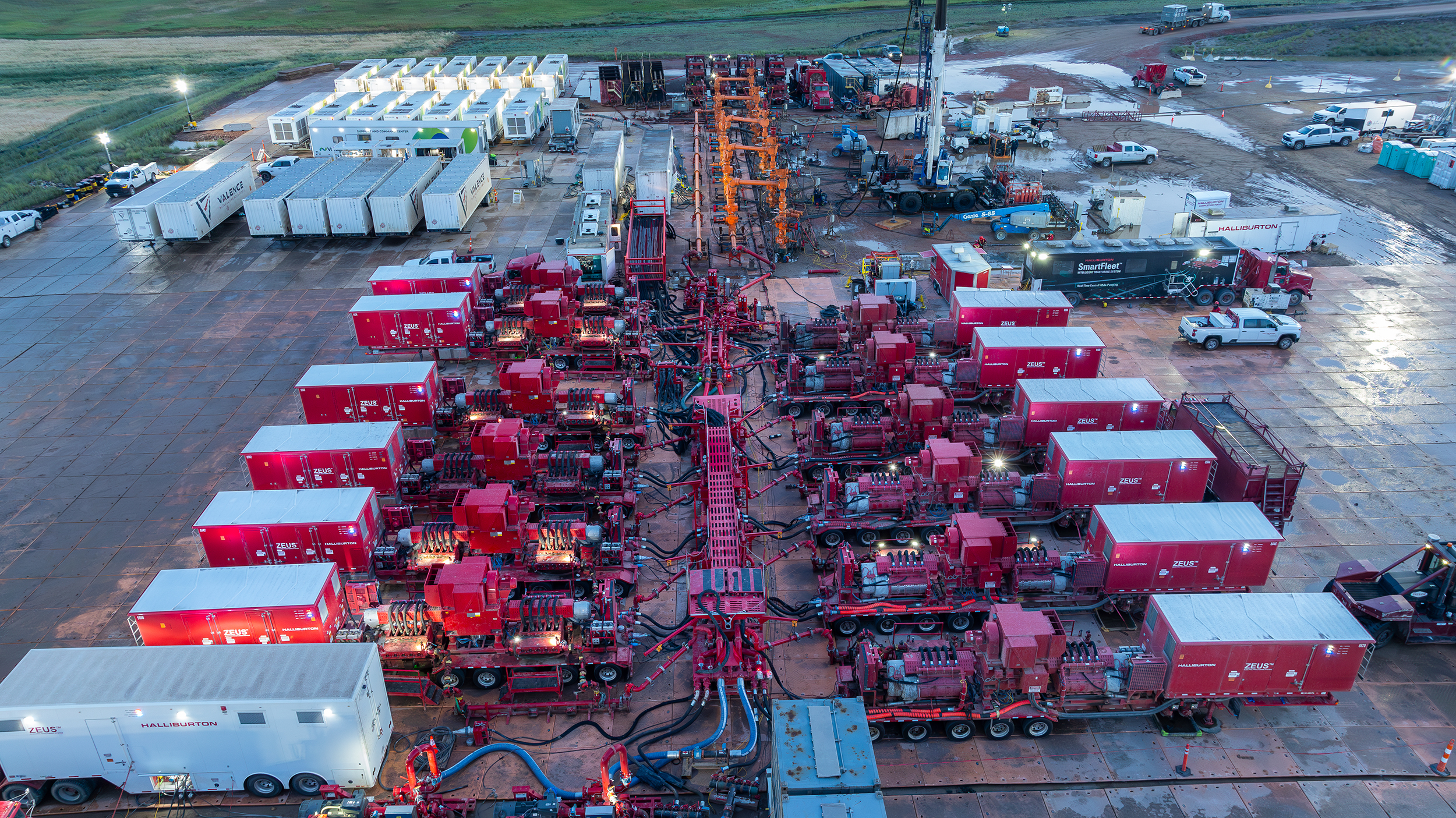 Search
Search
 Search
Search

Halliburton understands the oil and gas industry has an important role to play to help reduce the world's emissions, and that affordable, secure energy is essential for global economic development. We are dedicated to our work to reduce emissions, improve efficiency, and advance the development of clean energy options.
You can read our Climate Change Statement, Climate Risk Scenario Analysis, and additional information about our emissions reduction efforts on the Halliburton website.
Chapters:
Emissions Reduction Progress
Our Chief HSE Officer has the responsibility to define and execute our emissions reduction strategy, which is overseen by the HSE Committee of our Board of Directors. This committee oversees all of Halliburton's HSE matters related to sustainability, risk-management processes, performance, and environmental impact — including climate matters.
In 2024, we continued to invest in initiatives to reduce our emissions intensity. Hydraulic fracturing accounts for 80% of our carbon footprint, and North America activity levels drove increased demand for our services in 2024. This resulted in a 2% increase in our absolute Scope 1 and 2 emissions year over year. However, since 2018 our overall emissions intensity per operating hour is down 16% thanks to continued investment in electric fracturing fleets.
We remain focused on deploying engineered fracturing equipment that gives our customers power source flexibility and operational efficiency, and reallocating legacy assets to minimize our overall emissions intensity and maximize returns. The exact shape of our absolute emissions trajectory depends upon evolving factors we do not control, including global energy demand and power source mix across our customer base. For example, even though the U.S. power grid is expected to reduce carbon emissions 52% by 2035,5 the energy demand from data centers is projected to triple in that timeframe.6 We continue to assess these external dynamics as we review our expected emissions trajectory.
Sustainability is integrated into our real estate processes. We assess and improve the efficiency of our facilities through a range of past and current initiatives and consume renewable electricity where feasible. In 2024, we reduced energy use at our facilities by more than 42 million kWh year over year, generated over 12 million kWh from on-site solar panels, and contracted renewable electricity at 25 sites that consumed more than 13 million kWh.
5 U.S. EIA 2023 Annual Energy Outlook
6 Department of Energy 2024 Report on U.S. Data Center Energy Use
Sustainability means serving our customers, employees, stakeholders, and communities in an environmentally, socially, and ethically responsible way.
Good corporate governance builds trust with our shareholders, customers, and employees.
Our people are the heart of everything we do at Halliburton. The success of our operations is a result of the dedication of our exceptional employees, leaders, contractors, and suppliers.
VIEW PEOPLE